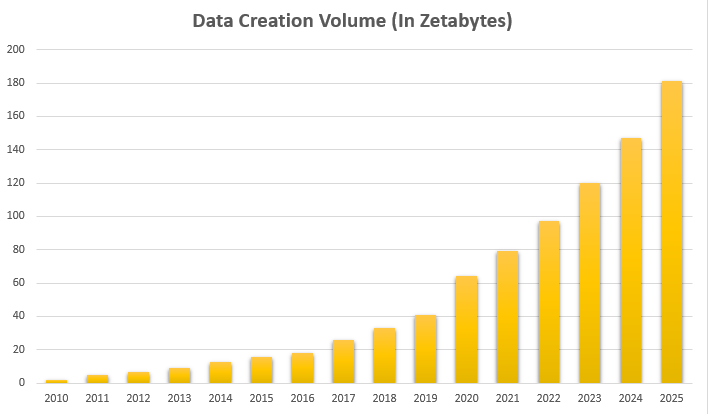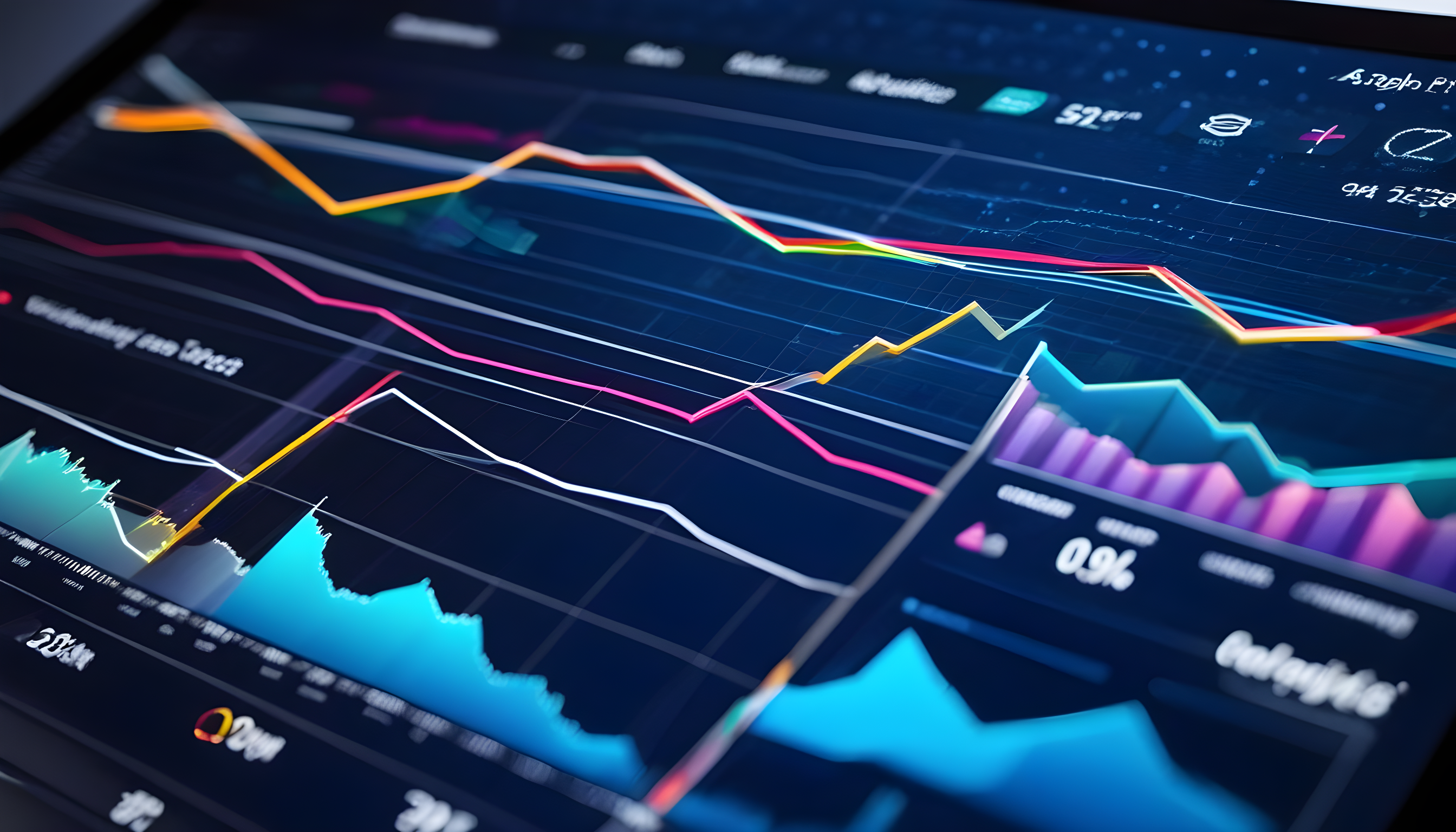Introduction

In the fast-paced world of digital marketing, understanding and effectively utilizing digital campaign metrics is crucial for success.
But what exactly are digital campaign metrics?
These metrics are specific measurements used to assess and evaluate the performance of online marketing campaigns, providing invaluable insights into their effectiveness. They help in understanding audience behavior, preferences, and engagement levels. By analyzing these metrics, businesses can make data-driven decisions, enhancing the effectiveness and ROI of their campaigns.
The Importance of Digital Campaign Metrics
![]()
Digital campaign metrics are often likened to a compass for navigating the complex and ever-changing online marketing landscape. This analogy highlights their critical role in guiding marketers through the myriad of decisions and strategies involved in digital marketing. Here’s an expanded explanation of this concept:
1. Navigational Tool in Digital Marketing
- Strategic Direction: Just as a compass provides direction, digital campaign metrics offer strategic guidance, helping marketers determine the best course of action in a vast and often overwhelming digital environment.
- Adaptation to Changing Trends: The online marketing landscape is dynamic, with trends and consumer behaviors constantly evolving. Digital campaign metrics allow businesses to adapt quickly, much like a navigator adjusting their course in response to changing winds.
2. Understanding Audience Behavior and Preferences
- Behavioral Insights: Metrics provide deep insights into how audiences interact with online content, whether it’s a website, social media post, or digital ad. This includes which pages they visit, how long they stay, and what actions they take.
- Preference Analysis: By analyzing metrics such as click-through rates, conversion rates, and engagement statistics, businesses can gain a clear understanding of what their audience prefers and what content resonates with them.
3. Evaluating Engagement Levels
- Engagement Metrics: Engagement levels can be measured through various metrics such as page views, time spent on site, and social media interactions (likes, shares, comments).
- Quality of Interaction: Beyond quantity, these metrics also shed light on the quality of interaction with the audience. High engagement levels typically indicate content that is relevant and valuable to the target audience.
4. Data-Driven Decision Making
- Informed Strategies: With access to concrete data, businesses can move beyond guesswork and base their marketing strategies on solid evidence.
- Resource Allocation: Metrics inform where to best allocate resources – be it time, money, or manpower – for maximum impact and efficiency.
5. Enhancing Campaign Effectiveness and ROI
- Performance Analysis: By continually monitoring campaign metrics, businesses can analyze the performance and make necessary adjustments to improve effectiveness.
- ROI Optimization: Metrics provide a clear picture of return on investment, helping businesses understand which campaigns are profitable and which are not, thereby aiding in optimizing overall ROI.
Key Digital Campaign Metrics to Monitor
Monitoring key digital campaign metrics is essential for understanding the performance and impact of online marketing efforts. Here’s a detailed look at some of the most important metrics to keep an eye on:
1. Traffic Metrics
- Unique Visitors: Measures the number of individual users who visit your site during a specific period. It helps in assessing the reach of your website.
- Page Views: Indicates the total number of pages viewed by visitors. High page views can suggest engaging content.
- Sessions: Refers to the period a user is actively engaged with your website. Tracking sessions can help understand user engagement duration.
2. Conversion Metrics
- Conversion Rate: The percentage of visitors who complete a desired action (like making a purchase or signing up for a newsletter). It’s crucial for measuring the effectiveness of a campaign in achieving its primary objectives.
- Cost Per Conversion: This metric helps understand the cost-effectiveness of your campaign in driving conversions.
3. Engagement Metrics
- Average Session Duration: The average amount of time users spend on your site. Longer durations can indicate more engaging content.
- Bounce Rate: The percentage of visitors who leave your site after viewing only one page. A high bounce rate might suggest that your site’s landing pages are not engaging enough.
4. Social Media Metrics
- Likes, Shares, and Comments: These are indicators of how engaging and popular your content is on social media.
- Follower Growth: Tracks the increase in your social media followers, reflecting the growing reach of your brand.
5. Email Marketing Metrics
- Open Rate: The percentage of recipients who opened an email campaign. It’s a key metric to assess how well your email subject lines are performing.
- Click-Through Rate (CTR): The percentage of email recipients who clicked on one or more links contained in an email. This metric helps gauge the effectiveness of email content.
6. Cost Metrics
- Cost Per Click (CPC): Commonly used in paid advertising campaigns, CPC indicates the cost for each click in a pay-per-click (PPC) campaign.
- Cost Per Acquisition (CPA): This measures how much it costs, on average, to acquire a customer. It is particularly important for understanding the ROI of your marketing activities.
7. Search Engine Optimization (SEO) Metrics
- Organic Traffic: The number of visitors coming to your website through search engine results. It’s crucial to understand the effectiveness of SEO strategies.
- Keyword Rankings: Tracks the ranking of your website for specific keywords in search engine results.
8. User Behavior Metrics
- Heatmaps: Visual representations of where users click, scroll, and spend time on your site.
- Event Tracking: Monitors specific actions taken by users on a website, like downloads or video plays.

The Role of Analytics Tools
Modern analytics tools play a pivotal role in tracking and interpreting digital campaign metrics. Platforms like Google Analytics, Adobe Analytics, and social media analytics tools offer comprehensive insights, enabling marketers to drill down into data for a more nuanced understanding and strategy refinement. Here’s a more detailed look into their role:
1. Data Collection and Aggregation
- Comprehensive Data Gathering: Analytics tools are designed to collect data from various sources, including websites, social media platforms, email campaigns, and paid ads.
- Integration Capabilities: Many tools can integrate data from different platforms, providing a consolidated view of campaign performance across multiple channels.
2. Performance Analysis
- Real-Time Monitoring: Analytics tools allow for real-time tracking of campaign metrics, enabling immediate responses to performance trends.
- Detailed Reporting: They provide detailed reports and dashboards that help in understanding the effectiveness of different aspects of a campaign.
3. User Behavior Insights
- Behavioral Tracking: These tools track how users interact with a website or campaign, providing insights into user behavior, preferences, and engagement patterns.
- Customer Journey Mapping: They help in mapping the customer journey, identifying key touchpoints and areas for improvement.
4. Segmentation and Personalization
- Audience Segmentation: Analytics tools can segment audiences based on behavior, demographics, and other criteria, enabling more targeted marketing.
- Personalized Marketing: Insights gained from these tools can be used to create personalized marketing strategies, improving engagement and conversion rates.
5. Optimization and Testing
- A/B Testing: Many analytics tools include features for A/B testing, allowing marketers to test different versions of a webpage or campaign to determine which performs better.
- Campaign Optimization: Continuous performance data aids in optimizing campaigns for better results.
6. Predictive Analysis
- Future Trends Prediction: Advanced tools use predictive analytics to forecast future trends and user behaviors, helping in proactive campaign planning.
- ROI Projections: They can also project the potential ROI of different marketing strategies, aiding in strategic decision-making.
7. Competitive Analysis
- Market Benchmarking: Analytics tools often provide insights into how a business’s online performance compares to competitors and industry benchmarks.
- Strategic Adjustments: This information is crucial for making strategic adjustments to gain a competitive edge.
8. Usability and Experience Testing
- User Experience Analysis: Tools like heatmaps and session recordings help understand how users interact with a site, providing insights into user experience and usability issues.
- Website Optimization: This data is vital for making website improvements to enhance user experience and engagement.

Interpreting Metrics for Strategic Decisions
It is a crucial aspect of digital marketing, where the data collected through various metrics is analyzed and used to make informed strategic decisions. This process involves going beyond the surface-level numbers to understand what they signify about the performance of digital campaigns and how they can inform future strategies. Here’s a detailed look at this process:
1. Understanding the Data
- Data Analysis: Examining the raw data to understand user interactions and campaign effectiveness.
- Beyond Numbers: Looking beyond the quantitative aspects to interpret qualitative insights.
2. Contextual Analysis
- Aligning with Goals: Assessing metrics in the context of specific campaign goals and objectives.
- Relevance to Objectives: Differentiating the importance of metrics based on whether the focus is on brand awareness, lead generation, or sales conversions.
3. Identifying Trends and Patterns
- Trend Spotting: Analyzing data over time to identify trends in user behavior and campaign results.
- Content and Timing Insights: Recognizing successful content types, optimal times for engagement, and audience segment responses.
4. Correlation and Causation
- Causal Relationships: Determining if changes in metrics result from specific campaign actions.
- Avoiding Misinterpretation: Understanding the difference between correlation and causation to prevent incorrect conclusions.
5. Actionable Insights
- Practical Steps: Translating data analysis into actionable steps for campaign improvement.
- Content Strategy Example: Increasing production of content that drives high engagement and conversions.
6. Decision Making
- Strategic Choices: Making informed decisions on budget allocation, content strategy, marketing channels, and audience targeting.
- Refining Marketing Strategy: Utilizing insights to refine and optimize the marketing strategy.
7. Performance Benchmarks
- Benchmark Establishment: Setting and evaluating performance benchmarks to measure campaign success.
- Comparative Analysis: Comparing current performance against historical data and industry standards.
8. Feedback Loop
- Continuous Improvement: Creating a cycle where decision outcomes are monitored and used to inform future strategy adjustments.
Challenges in Managing Digital Campaign Metrics
Managing digital campaign metrics can present several challenges, largely due to the complexity and dynamic nature of digital marketing. Understanding these challenges is crucial for marketers to effectively navigate and leverage the wealth of data available. Here are some key challenges in managing digital campaign metrics:
1. Data Overload
- Volume of Data: The sheer volume of data generated by digital campaigns can be overwhelming, making it difficult to identify what is most relevant.
- Analysis Paralysis: The abundance of metrics and data points can lead to analysis paralysis, where decision-making is hindered due to too much information.
2. Data Quality and Accuracy
- Inconsistent Data: Ensuring data consistency across various platforms and tools can be challenging.
- Accuracy Concerns: Questions about the accuracy of data, especially from third-party sources, can lead to uncertainty in decision-making.
3. Integration of Multiple Data Sources
- Tool Fragmentation: Many businesses use a range of tools to track different metrics, and integrating this data can be complex.
- Unified View Challenges: Creating a unified view of data from disparate sources is often technically and logistically challenging.
4. Keeping Up with Changing Algorithms
- Platform Updates: Frequent updates to algorithms on platforms like Google and Facebook can affect how metrics are measured and reported.
- Adaptability: Staying up-to-date with these changes and adapting strategies accordingly can be demanding.
5. Attribution Modeling
- Complex Customer Journeys: Understanding the exact impact of specific marketing efforts on conversions is complicated due to multi-channel customer journeys.
- Attribution Accuracy: Choosing the right attribution model and ensuring its accuracy remains a significant challenge.
6. Resource Allocation
- Expertise Requirement: Interpreting data correctly often requires specialized skills and knowledge.
- Budget Constraints: Allocating budget efficiently based on metric insights, especially in smaller businesses with limited resources, can be tricky.
7. Privacy Regulations and Data Security
- Compliance with Laws: New privacy laws like GDPR and CCPA have changed how data can be collected and used, posing compliance challenges.
- Data Security: Ensuring the security of collected data is paramount and increasingly challenging in a landscape of cybersecurity threats.
8. Real-Time Data Analysis
- Timeliness: The ability to analyze data in real-time and make immediate adjustments is crucial but can be challenging to implement effectively.
- Resource Intensive: Real-time analysis requires significant resources and technology infrastructure.
Conclusion
In conclusion, digital campaign metrics are far more than mere numbers; they are the cornerstone of effective digital marketing strategies. The insights they provide are invaluable for multiple aspects of campaign management:
- Data-Driven Strategies: They enable businesses to craft data-driven strategies that resonate with their target audience, ensuring that every decision is grounded in concrete analysis rather than guesswork.
- Audience Connection: By understanding audience behaviors and preferences through these metrics, marketers can create more compelling and relevant campaigns that effectively engage and connect with their audience.
- Adaptability and Evolution: As digital marketing continues to evolve rapidly, the role of these metrics becomes even more critical. They allow marketers to stay agile, adapting to new trends, technologies, and consumer behaviors.
- Overcoming Challenges: While managing digital campaign metrics presents challenges, such as data overload, changing algorithms, and privacy concerns, overcoming these hurdles is essential for the successful navigation of the digital marketing landscape.
- Business Growth: Ultimately, the strategic use of digital campaign metrics drives business growth. They inform decisions that optimize campaign performance, enhance ROI, and contribute to the overall success of marketing efforts.
As we look towards the future of digital marketing, the importance of these metrics only grows stronger. They are not just a part of successful online marketing efforts; they are fundamental to understanding, executing, and evolving strategies in a digital world that is constantly in flux. For businesses looking to thrive in this environment, embracing and mastering digital campaign metrics is not just advisable; it’s imperative.
For personalized insights and expert guidance on leveraging digital campaign metrics for your business, visit us at QuickAttain and stay ahead in the dynamic world of online marketing.


